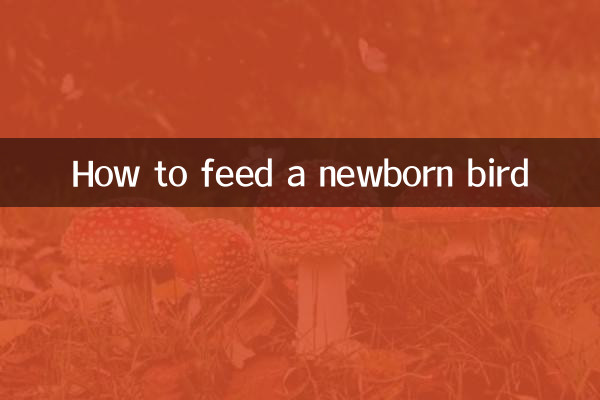How to feed a newborn bird
Newly born baby birds need careful care to grow up healthily. Whether a baby bird is picked up by accident or hatched in captivity, feeding, warmth and environmental management are crucial. Below are detailed feeding guidelines and precautions.
1. Basic needs of newborn birds

Newly hatched or newly born chicks generally fall into two categories:early bird(such as chicken, duck) andlate blooming bird(Such as sparrows, pigeons). Late adult birds are more in need of artificial feeding because they are completely dependent on their parents for food and warmth.
| Category | Features | Feeding method |
|---|---|---|
| early bird | After birth, it can forage on its own and has plump feathers. | Provide crushed grains, insects, etc. |
| late blooming bird | No feathers, eyes not open, needs artificial feeding | Feed liquid food, such as bird milk powder |
2. Feeding method
1.food choices: Late adult birds need high-protein liquid food, such as specialized bird milk powder (which can be made into a paste with warm water). Do not feed them milk or bread, which can easily lead to indigestion.
| food type | Suitable for birds | Things to note |
|---|---|---|
| bird milk powder | Late adult birds (parrots, sparrows, etc.) | Control the temperature at 38-40℃ to avoid burns |
| Insects (such as mealworms) | Early birds (chickens, ducks, etc.) | Eat after chopping to avoid choking |
2.Feeding frequency: Newly born chicks need to be fed every 2-3 hours, and the interval can be appropriately extended at night. As they grow, gradually reduce the frequency of feedings.
3. Environmental management
1.keep warm: Nestlings cannot regulate their body temperature and need to keep the ambient temperature at 30-35°C (heating lamps or hot water bottles can be used).
| age | suitable temperature |
|---|---|
| 1-7 days | 32-35℃ |
| 7-14 days | 28-32℃ |
| 14 days later | 25-28℃ |
2.Nest layout: Use soft materials (such as lint-free cloth or paper towels) to pad the nest, and avoid using cotton (which can easily get tangled in bird claws).
4. Frequently Asked Questions and Solutions
1.Refusal to eat: Check if the food temperature is right, or try feeding slowly with a fine needle tube.
2.Diarrhea: The food may be unclean or the temperature is too low. Adjust your diet and keep the environment dry.
3.injured: Mild injuries can be disinfected with iodophor, but severe injuries require contacting a veterinarian.
5. When to release to nature
When the bird's feathers are fully grown and it can eat and fly independently (usually 4-6 weeks), it can be released in a suitable environment. If it is a protected species, it is recommended to contact a wildlife rescue agency.
Conclusion
Feeding newborn birds requires patience and a scientific approach. Proper feeding, warmth and observation are key. If you are unsure about the operation, it is recommended to consult a professional bird rescuer to ensure the healthy growth of the bird.

check the details

check the details